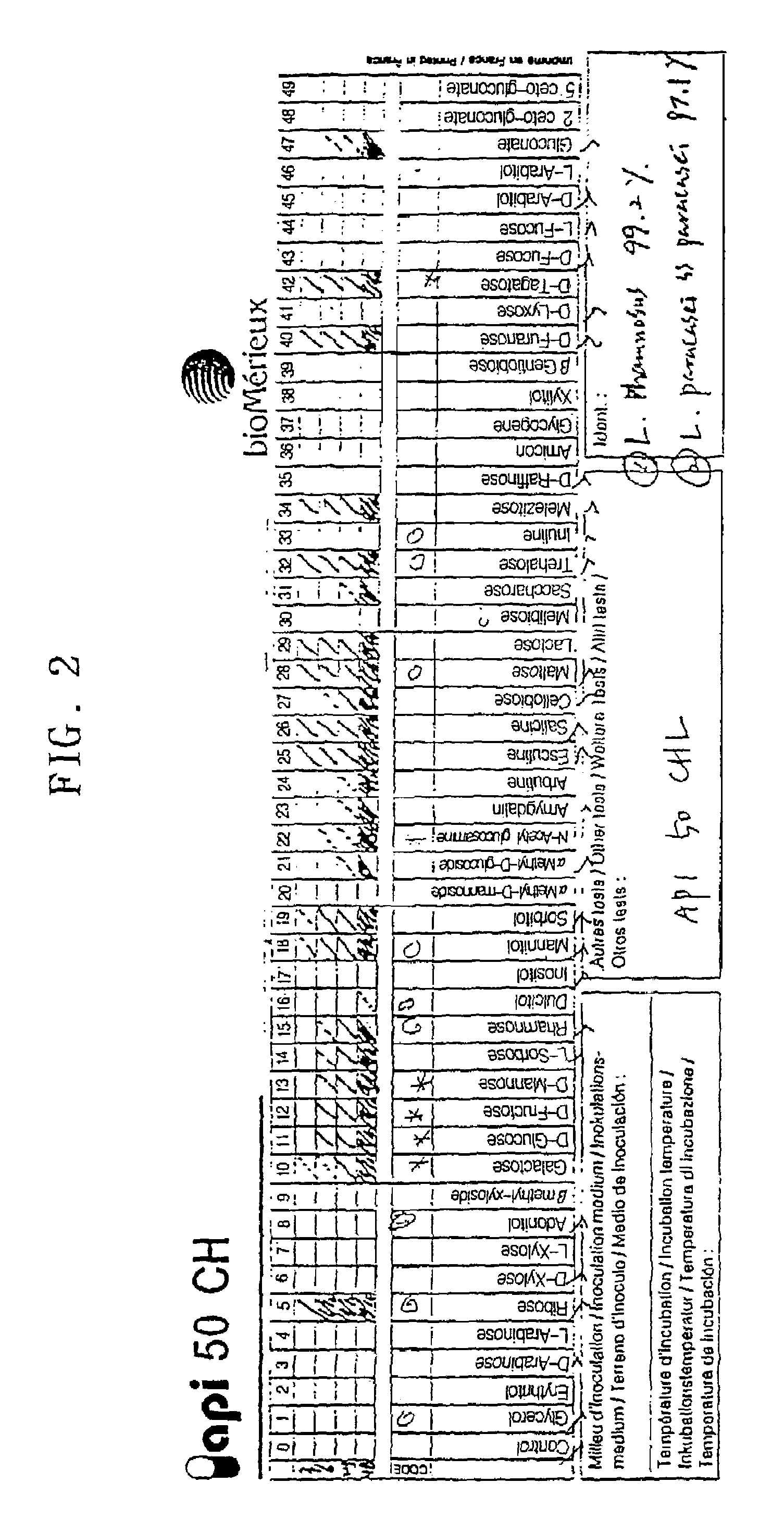Lactobacillus paracasei subsp. paracasei strain antibacterial against Helicobacter pylori and Escherichia coli 0157:h7
a technology of lactobacillus and paracasei, which is applied in the field of new lactobacillus paracasei, can solve the problems of lactic bacteria that have to be solved for application and efficacy, and the body is prone to attach and proliferate, so as to prevent and treat gastritis, kill or suppress the proliferation of helicobacter pylori
- Summary
- Abstract
- Description
- Claims
- Application Information
AI Technical Summary
Benefits of technology
Problems solved by technology
Method used
Image
Examples
example 1
Separation of Lactic Bacteria from Porcine Stomach
[0069]For 10 years (1988˜1998), stomachs were obtained from slaughtered pigs (3,270 heads) in butchery markets located in Pusan, Chinju, Suwon, Jeonju, etc. and stored at 4° C. until it be applied for experimental samples.
[0070]Then, 1 g of porcine gastric mucosa was immersed on MRS broth and cultivated at 37° C. for 24 hours. The cultured medium was smeared onto MRS agar plate and left at 37° C. for 3 days. After the incubation, colonies appeared on the agar medium were collected to be examined about bacterial features such as Gram staining pattern, glycolytic capacity and the like as illustrated below. As a result, the bacterium separated above was identified to be a Lactobacillus sp. strain.
example 2
Purification of Lactic Bacteria from Patients' Feces Administering the Above Lactobacillus sp.
[0071]In order to investigate the compatibility and the antibacterial property of lactic bacteria separated in Example 1 to human inner body, 5 patients with chronic gastritis and enteritis were administered. Precisely, 100 ml of the above lactic bacteria was eaten respectively for 2 months in the state of an empty stomach, 30 minutes before rising in the morning and sleeping in the evening. As a result, the progress was improved before and after by injecting for 1 month and after injecting for 2 months, all the patients present in the experiment were recovered.
[0072]At this point, lactic bacteria were separated again from 5 administered patients' feces by the procedures described in Example 1 and thus 3˜5×107cfu / g of cells were obtained. Then the bacterial features were investigated to identify the lactic bacteria comparing with the bacteria separated in Example 1 and identical to that of ...
example 3
Gram Staining of Lactic Bacterium CSK 01
[0074]The bacterial features of CSK 01 were examined by using Gram staining. As a result, it was indicated to Gram positive as shown in FIG. 1a and FIG. 1b and identified to a rod without spores and in the size of 1.0˜1.5 μm, which was a typical feature indicated in lactic bacillus, Lactobacillus sp.
[0075]Then, the lactic bacterium CSK 01 was investigated to elucidate the cultural properties. As a result, it made ash-colored colonies with 2˜3 mm diameter onto MRS agar plate and can be cultivated preferably at 37° C. than at 30° C.
PUM
| Property | Measurement | Unit |
|---|---|---|
| pH | aaaaa | aaaaa |
| diameter | aaaaa | aaaaa |
| size | aaaaa | aaaaa |
Abstract
Description
Claims
Application Information
 Login to View More
Login to View More - R&D
- Intellectual Property
- Life Sciences
- Materials
- Tech Scout
- Unparalleled Data Quality
- Higher Quality Content
- 60% Fewer Hallucinations
Browse by: Latest US Patents, China's latest patents, Technical Efficacy Thesaurus, Application Domain, Technology Topic, Popular Technical Reports.
© 2025 PatSnap. All rights reserved.Legal|Privacy policy|Modern Slavery Act Transparency Statement|Sitemap|About US| Contact US: help@patsnap.com



